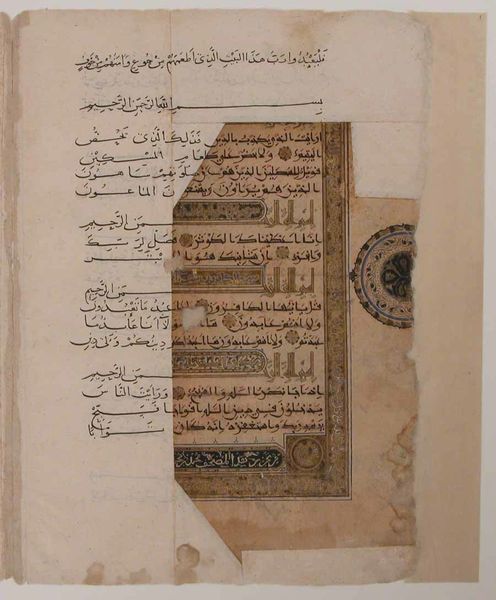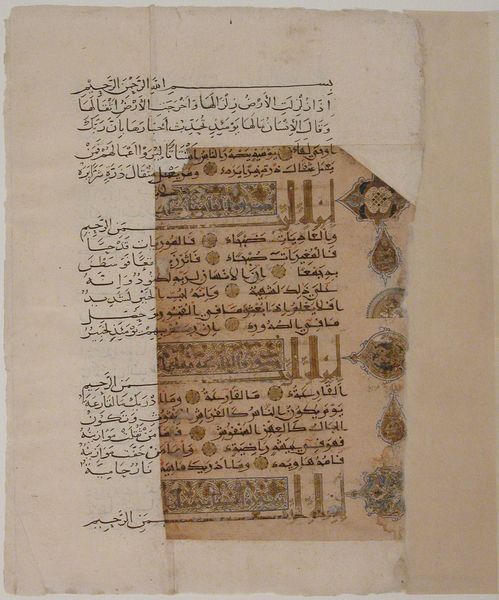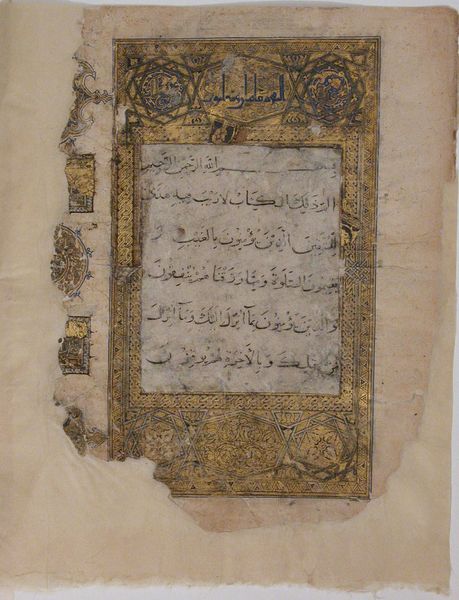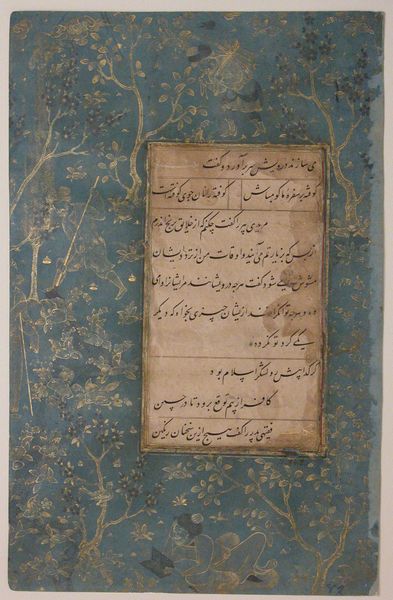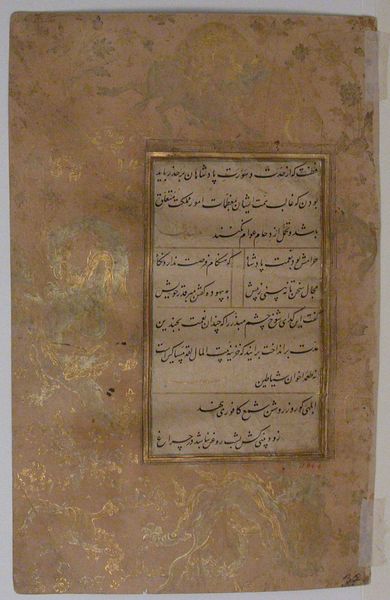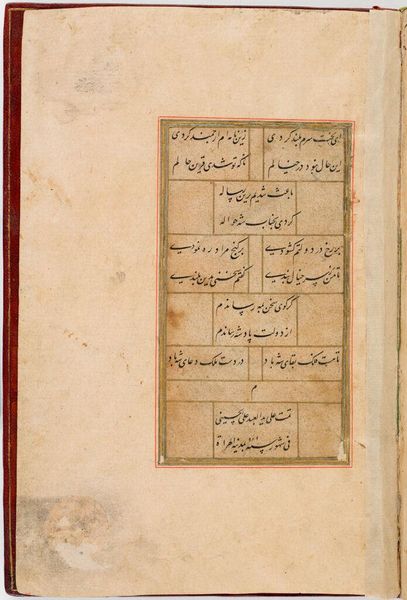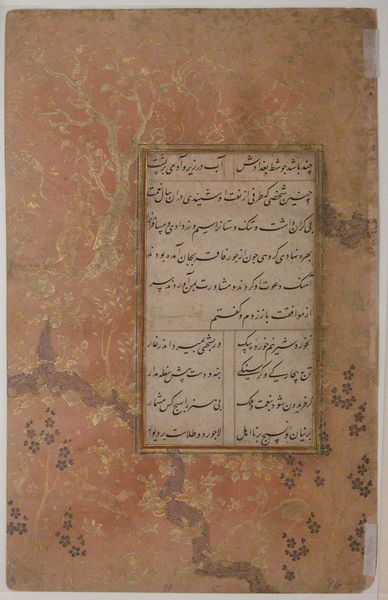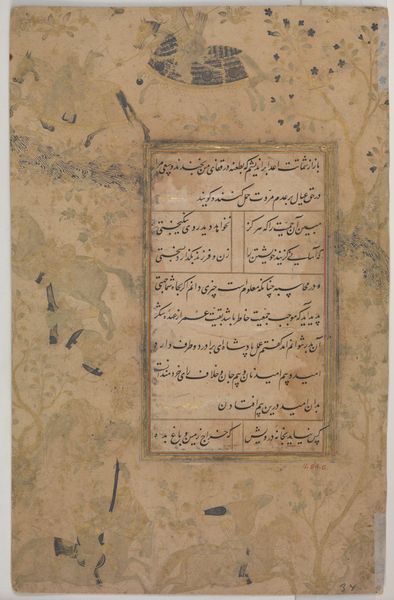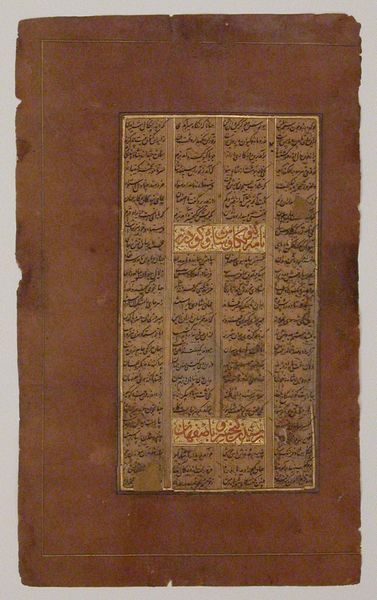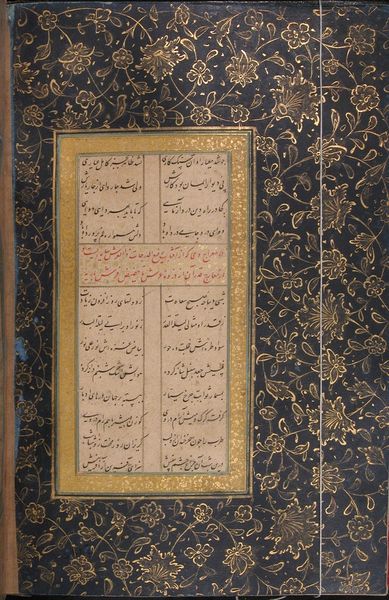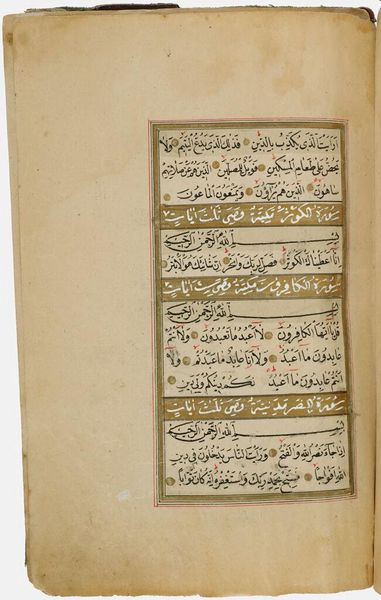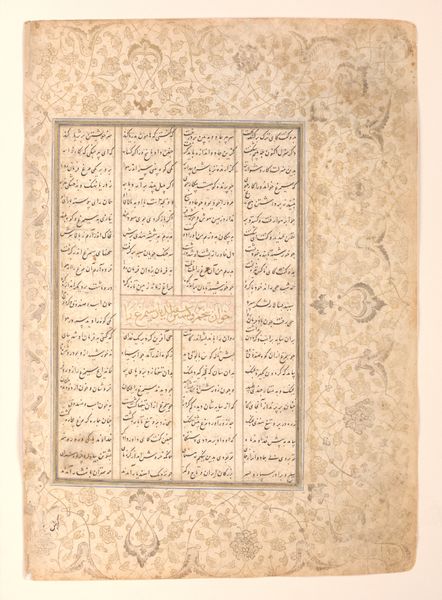
paper, ink
#
paper
#
ink
#
islamic-art
#
miniature
#
calligraphy
Dimensions: H. 7 13/16 in. (19.8 cm) W. 5 1/16 in. (12.8 cm)
Copyright: Public Domain
Curator: Here we have a folio from a Qur'an manuscript, crafted sometime between 1112 and 1162. It's currently housed at the Metropolitan Museum of Art. The artist is Muhammad al-Zanjani and it is written in ink on paper. Editor: It feels immediately peaceful, yet powerful. The composition is intricate but restrained, like a tightly wound spring. There's such delicacy to the script. Curator: Well, let's unpack some of that. Manuscripts like this weren't just functional texts; they held significant cultural weight. The act of creating such a beautiful object elevated the written word, reflecting the importance of the Qur'an in Islamic society. Editor: Absolutely. And we have to consider that religious and intellectual life shaped the reception of this work. What about the politics surrounding image making at this time? Curator: Islamic artistic expression favored calligraphy and geometric patterns over representational imagery. This wasn’t simply an aesthetic choice. These elaborate scripts offered an acceptable method for artistry, because a faithful transmission of the divine message, using careful attention and technique, would please God. Editor: So, calligraphy became a visual form of devotion, and by avoiding figural representation, Muslim artists didn't stray into idolatry, a cultural and spiritual choice made during manuscript production. Curator: Exactly! The manuscript as an object carries meaning as much as the content itself. And given the context of sectarian conflict in the Islamic world at this time, a unified visual language expressed by calligraphy provided common ground, transcending factional interests to evoke divine messages for a widespread audience. Editor: The very act of creating it could be interpreted as a form of spiritual activism. The selection of specific calligraphic styles might have also been making some bold pronouncements about identity, prestige, and affiliation, don't you think? Curator: Absolutely. These styles signaled intellectual and social identities and carried messages to communities. Editor: Reflecting on our brief conversation, it's clear the piece is much more than meets the eye; the ink, the paper, the delicate hand—they're all threads woven into a rich social and historical tapestry. Curator: A testament to the power of the written word, then, in a specific social, religious, and creative setting.
Comments
No comments
Be the first to comment and join the conversation on the ultimate creative platform.
